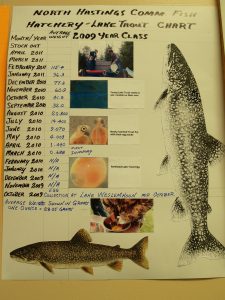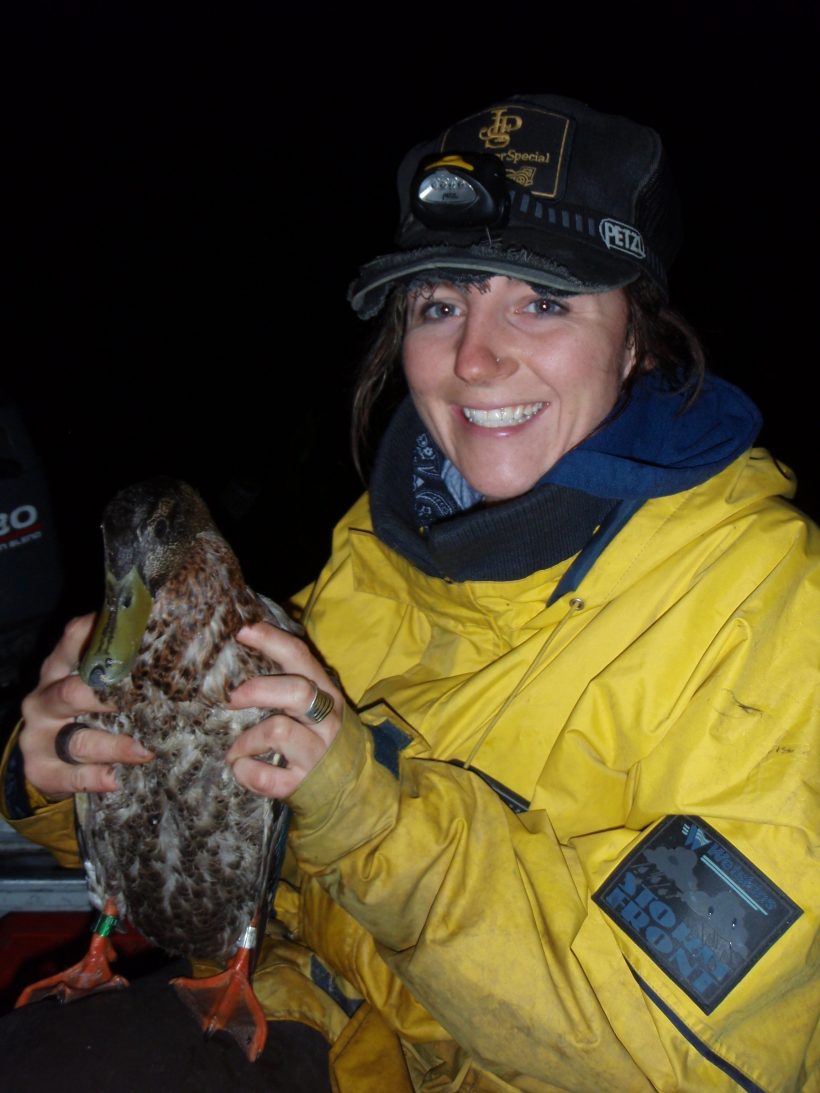MNRF Up-date 2023 for Bird Banding and the Lake Opeongo Lake Trout Study
MIGRATORY BIRD BANDING UP-DATE 2023-12-22
In an earlier article I described my participation in an MNR duck banding program on the Conroy Marsh. This article features the most recent news for the year 2023.
Migratory birds, including waterfowl, are federally managed based on the four North American Flyways: the Central, Pacific, Mississippi and Atlantic. The MNRF conducts its duck banding program via a funding partnership with the Mississippi and Atlantic Flyway Councils. MNRF staff have banded over 58,000 ducks from 58 sites throughout Ontario since 1996. My experience cautions one not to go with the math; each site has not produced 1000 ducks. To date, over 11,000 bands have been recovered, mostly from waterfowl hunters.
The banding takes place each August and September using airboats, dip nets, staff and volunteers to capture ducks during the night. An aluminum band with a unique number is attached to each duck that is captured. The band number, age, sex, and species of duck is recorded before live release. When the band is recovered it hopefully will be reported to the Canadian Bird Banding Office which is managed by the federal government.
This banding program provides essential information pertaining to migratory routes, breeding sites, winter distribution, duck distribution and survival rates. The information is useful for determining hunting regulations, limits and conservation efforts.
Most MNRF banded ducks have been recovered in 9 Canadian provinces and 40 states. However, they have also been found in the Bahamas, Cuba, Colombia, and Dominican Republic to name just a few.
On average, 340,000 birds are banded in Canada annually making for an average of 1.2 million birds banded per year in North America. Mallard ducks are the most frequently banded waterfowl in Canada (about 2.3 million since the program’s inception in the early 1900’s), followed by the Canada Goose (840,000). Within all of North America there are over 7 million banded Mallard ducks and 4 million banded Canada Geese.
Such data helps to monitor bird populations and their survival rates; monitor ecosystem health; monitor endangered species and maintain longevity records.
For example, the Ruby-throated Hummingbird longevity record is 9 years and two months; the Downy Woodpecker (11 years, 11 months); the American Robin (13 years, 11 months); the Mallard (27 years, 7 months); the Great Horned Owl (28 years) and the Mourning Dove (30 years, 4 months).
For more reading goto ‘duck banding’ elsewhere on this website.

THE LAKE OPEONGO L.T. STUDY
In its 87th year, the Lake Opeongo lake trout study is conducted at the MNRF Harkness Laboratory of Fisheries Research in Algonquin Provincial Park. It is the longest running recreational fishery monitoring initiative in Ontario that has been taking place since 1936 when Fred Fry set out to interview anglers on Lake Opeongo on day one, May 23. The term “creel” refers historically to the wicker baskets anglers once used to carry their fish. “Creel Survey” refers to fish caught.
To-day creel surveys occur at access points where anglers are asked about their outting. Team members collect biological data such as length, weight, stomach contents, plus some tissue for aging, genetic and isotope analysis. During Lake Trout (LT) spawning members of the Harkness team capture and tag hundreds of LT on the spawning shoals each fall. I recall donning a warm water floatation outfit late one cold October evening and capturing spawners by moonlight. Deer season was only a week away. I was so focused on the LT experience that I had entirely forgotten!
The LT was placed in water laced with a natural sedative to calm the fish while it was being tagged and measured. Once that task was completed my job was to place the fish in another non-sedated wash bath to cleanse the LT before its live release. The tagged fish contribute to the collective knowledge of LT such as population numbers. This assists researchers in understanding the size of the LT population and changes over time.
Creel surveys and tagging analysis contribute to Algonquin Park’s fisheries management strategies.
